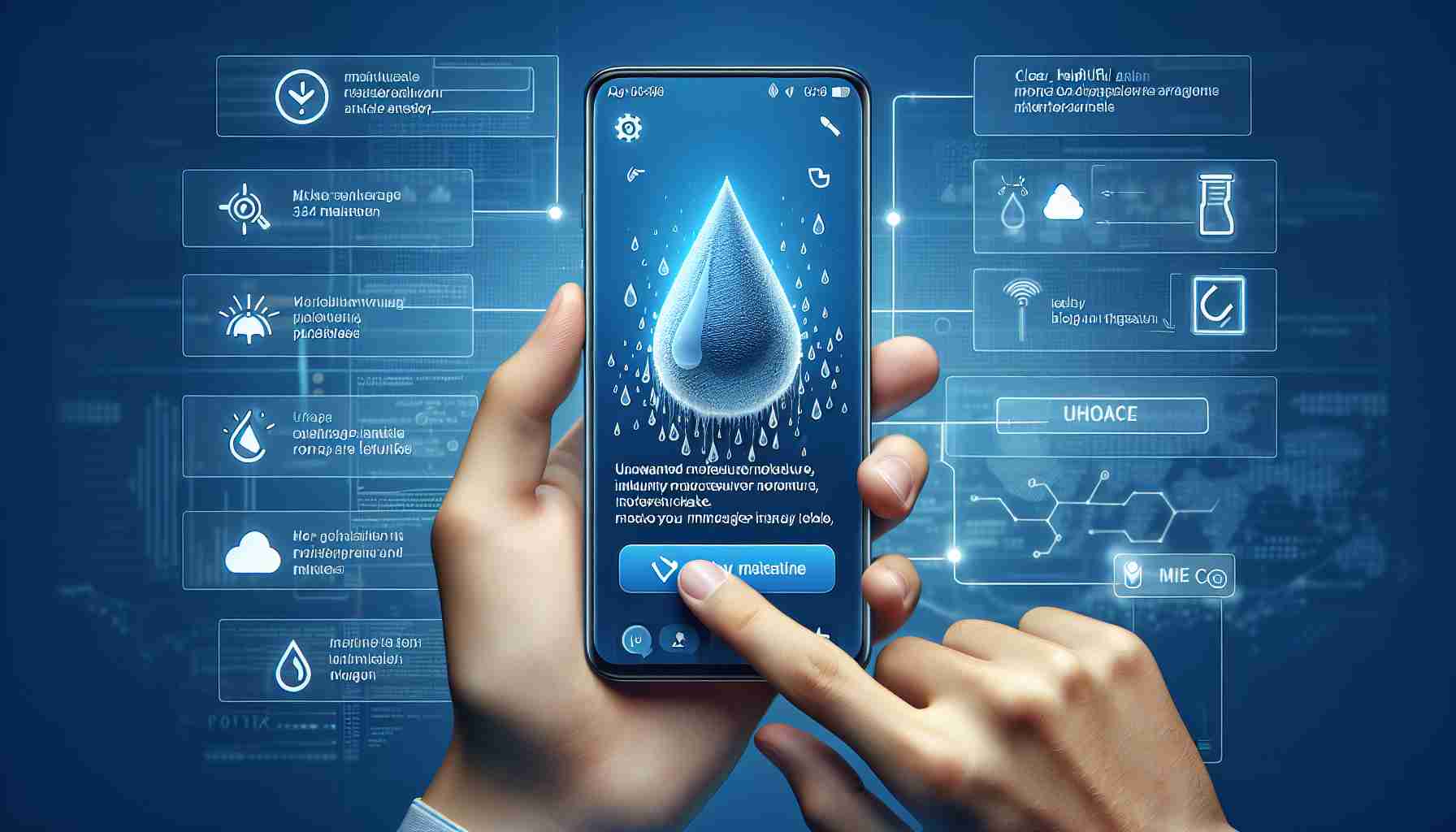Samsung smartphone users often encounter a persistent moisture detection alert, causing charging disruptions and user frustration. This alert activates when moisture is detected in the USB charging port, a safety measure to prevent potential water damage and corrosion in your device.
To tackle this issue, Samsung suggests a series of straightforward steps. Firstly, if your device displays the infamous water drop icon signaling moisture, it is advised to turn off the device promptly and allow it to dry completely. This initial step is essential to mitigate any further damage.
In an effort to assist users, Samsung released an informative video detailing the actions to take when confronted with this alert on a Galaxy smartphone. The content underlines the importance of checking your device’s software and apps to ensure they are updated to the latest versions, as a preventive step.
When dealing with the moisture detection error, it’s essential to disconnect your phone from its charger. Gently wipe the device with a dry cloth or softly shake it multiple times with the USB port facing downwards. For additional drying, place your phone on a cloth in a well-ventilated area or use a fan.
Furthermore, the company reminds users that phones should be correctly aligned on their wireless charging pads to avoid interruptions in power transmission. This alignment is crucial for devices like Galaxy Fold and Galaxy Z Flip, which should be positioned closed with their back sides towards the charger.
If the moisture warning persists even after ensuring the device is dry, clearing the USB cache might resolve the issue. These tips aim to help users maintain their devices efficiently and ensure a seamless smartphone experience.
Unveiling Samsung’s Secret: Why Your Phone Thinks It’s Wet and What You Didn’t Know
Understanding the Hidden Effects: How Samsung’s Moisture Detection Impacts Lives
Samsung’s moisture detection alert might seem like a mere inconvenience, but it holds more significance than it appears. Beyond preventing physical damage to your device, this alert symbolizes the technological front where consumer behavior intertwines with electronic safety measures.
Interesting Facts and Controversies
One of the lesser-known facts about the moisture detection alert is its sensitivity. Users often mistake this function for a flaw, but what many don’t realize is that the sensor is designed to err on the side of caution. Samsung’s dedication to preventing damage has led to cases where the alert is triggered in high humidity conditions, drawing the ire of users who never had their phone near water.
A controversial aspect of this feature is its apparent contradiction in the design and use of water-resistant devices. Samsung’s flagship models claim certain degrees of water resistance, yet this alert can activate in situations that would otherwise seem harmless. This has sparked debate about the practical functionality versus marketed traits of “waterproof” phones.
Advantages
1. Protection Against Damage: The alert effectively safeguards the internal circuitry of phones from moisture-related damages, preventing costly repairs.
2. Preemptive Safety: By alerting users early, Samsung ensures that minor water exposure does not escalate into major hardware issues.
3. Increased Longevity: Devices potentially last longer with reduced risks of corrosion or malfunctions caused by moisture.
Disadvantages
1. False Positives: Overly sensitive alerts can lead to unnecessary interruptions and frustration, as users constantly battle a sensor designed to protect them.
2. Customer Inconvenience: For users constantly on the go, stopping to dry a phone upon receiving the alert can be disruptive.
3. Technical Hassles: Those unfamiliar with clearing a USB cache or aligning wireless charging pads may face additional confusion.
How Does This Affect Us?
On a broader scale, this feature forces users to become more conscientious about their device usage, especially in environments prone to moisture. For communities in coastal or high-altitude regions, these alerts are more frequent, impacting daily smartphone use and connectivity. Countries with varying climates might see different levels of disruption due to this feature’s sensitivity.
Questions and Answers
Q: Does this mean my phone isn’t as waterproof as advertised?
A: Samsung’s moisture detection acts as an additional layer of caution. While the devices have resilient design claims like IP68 ratings (for certain models), safeguarding internal components with moisture alerts remains a priority.
Q: Can I disable this feature if it’s overly sensitive?
A: Unfortunately, disabling the sensor isn’t officially supported, as it serves a critical protective function.
Q: How does this affect wireless charging?
A: Ensuring proper alignment on a wireless pad is necessary, especially for devices with unique form factors like the Galaxy Fold. Misalignment can simulate moisture issues by interrupting power transmission.
Conclusion
Samsung’s moisture detection alert is both a boon and a bane. While it undoubtably provides an essential safeguard, its sensitivity raises questions about the trade-offs between technological robustness and consumer convenience. This feature may evoke frustration but encourages awareness and preventive care in using expensive devices.
For more insights on innovative technological solutions and how they impact everyday life, click here for the Samsung official site.























